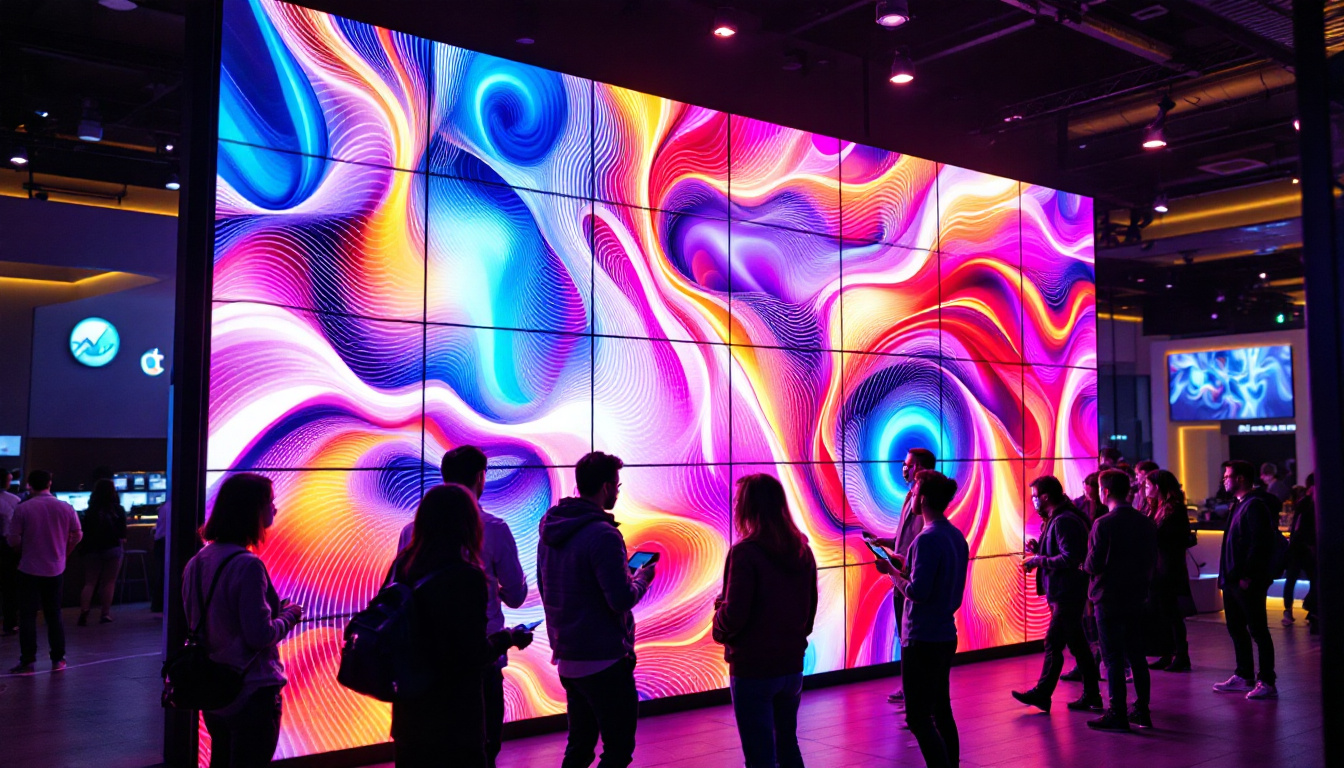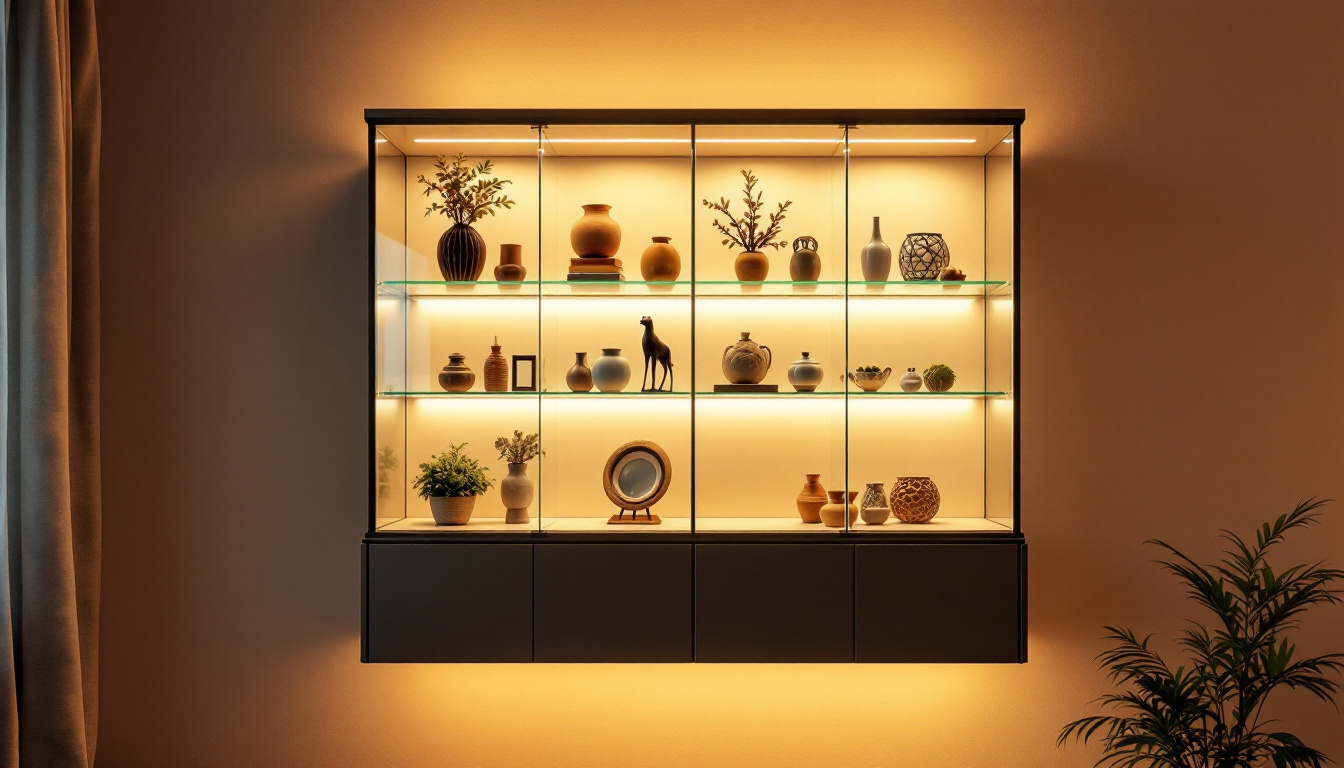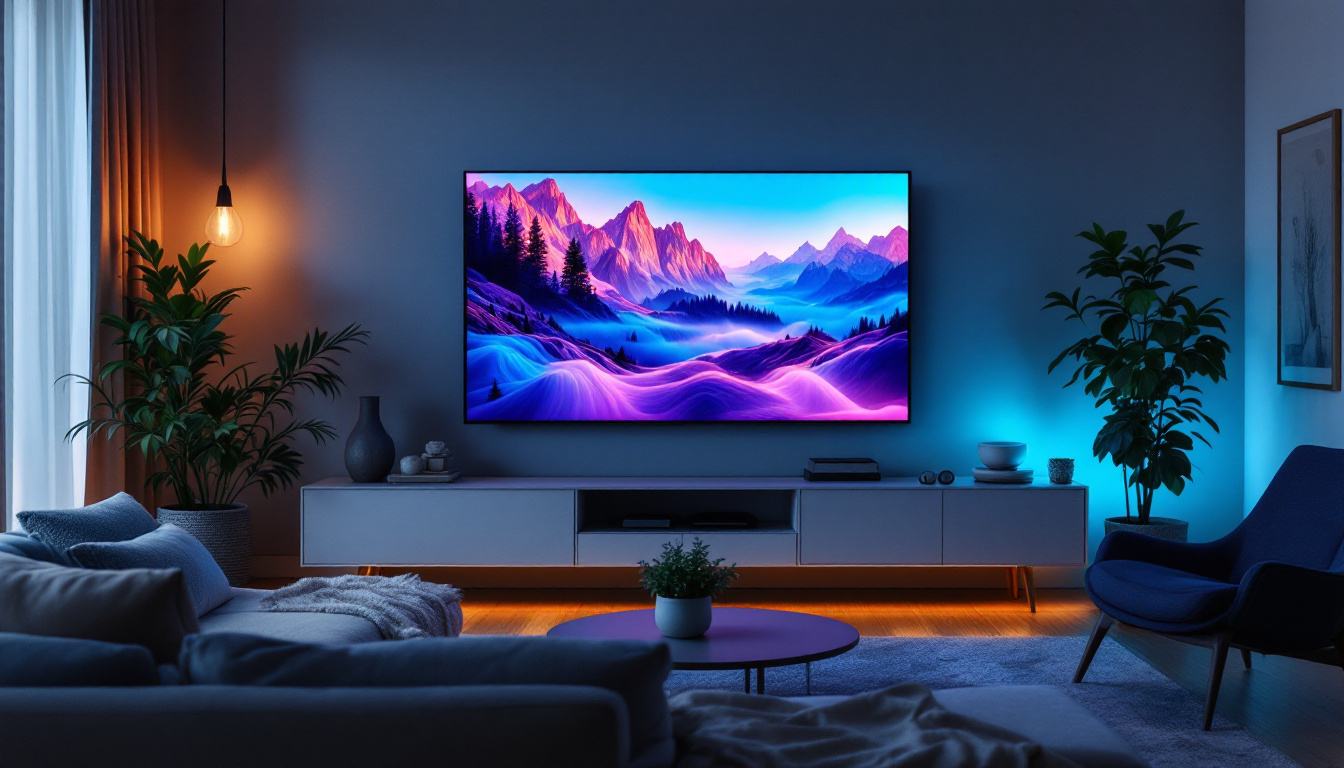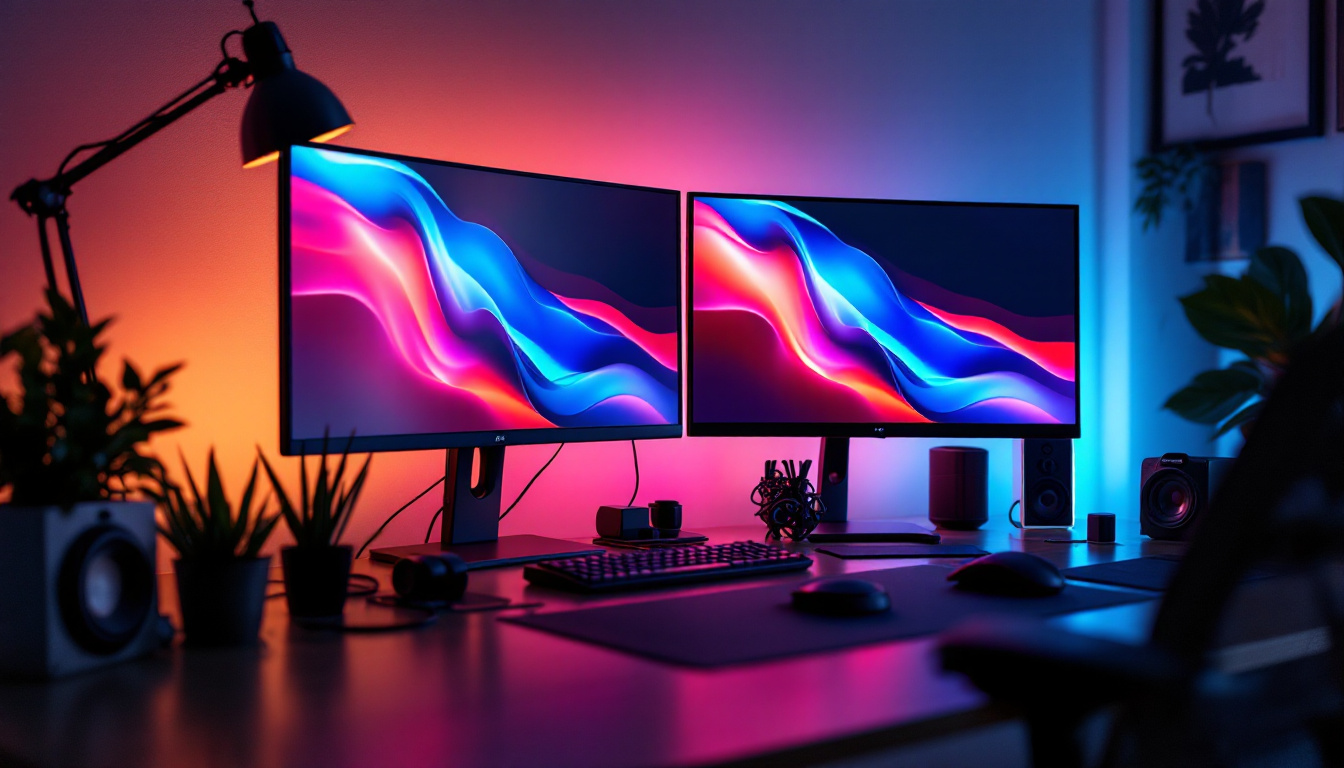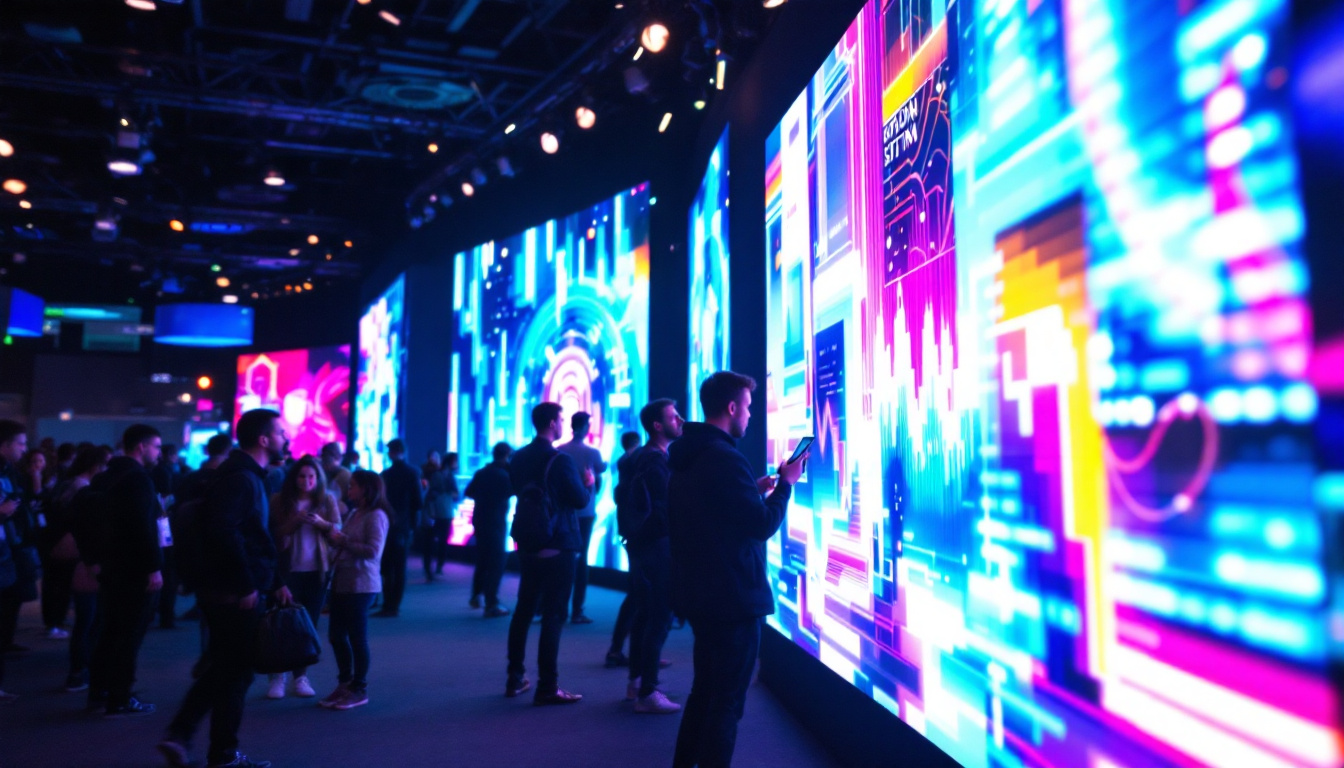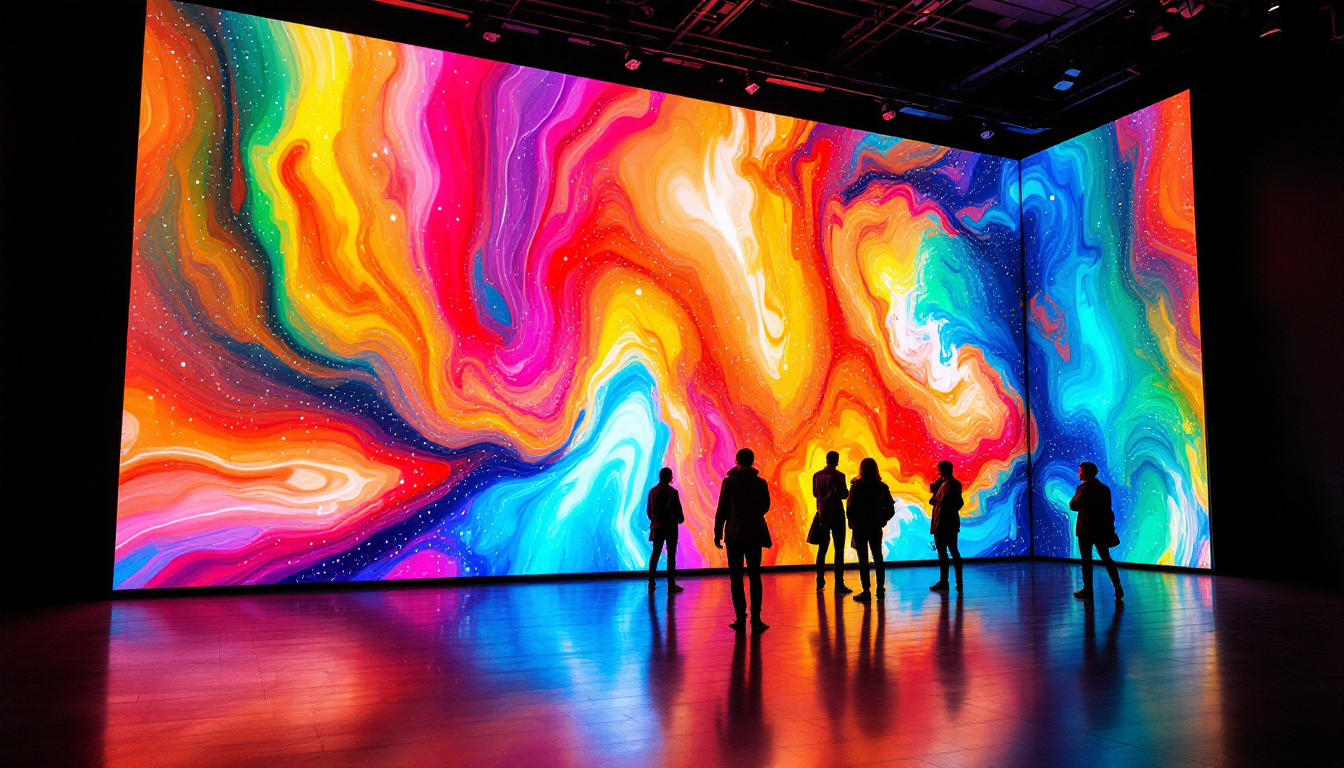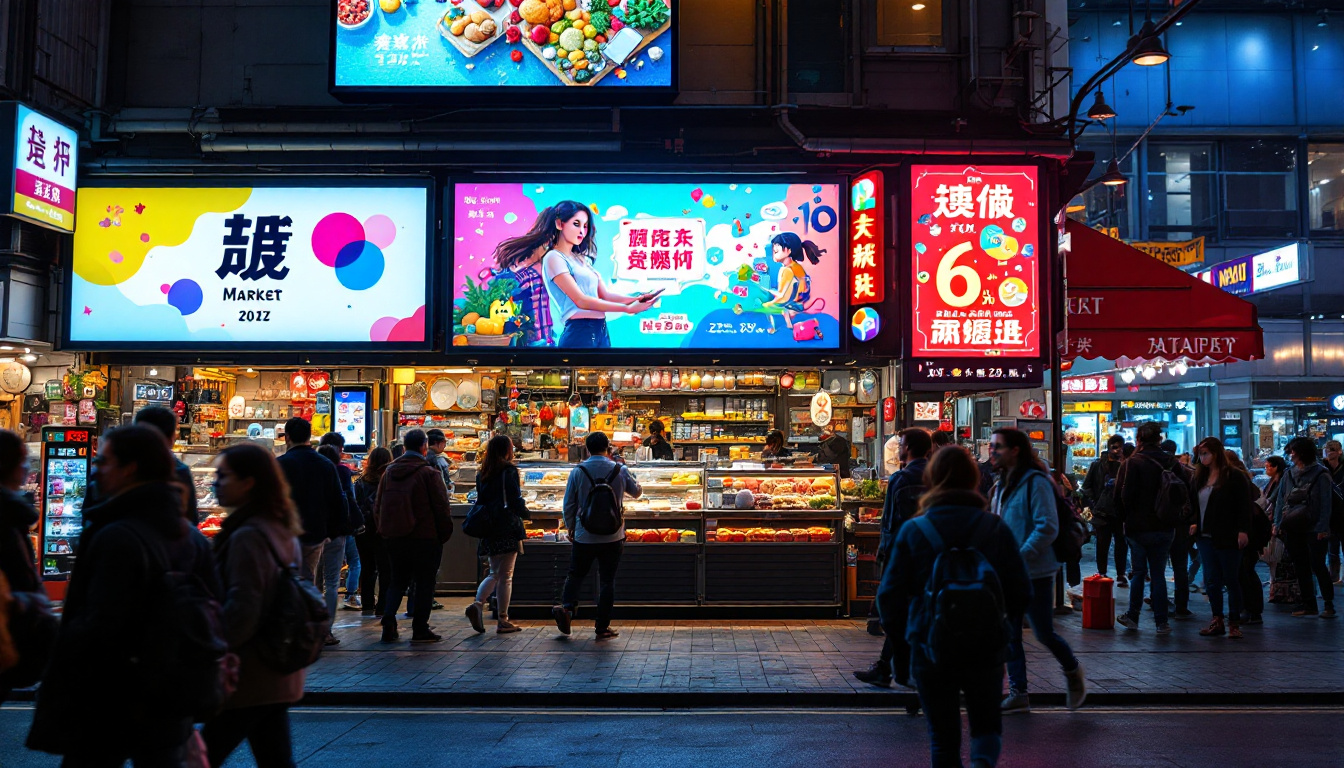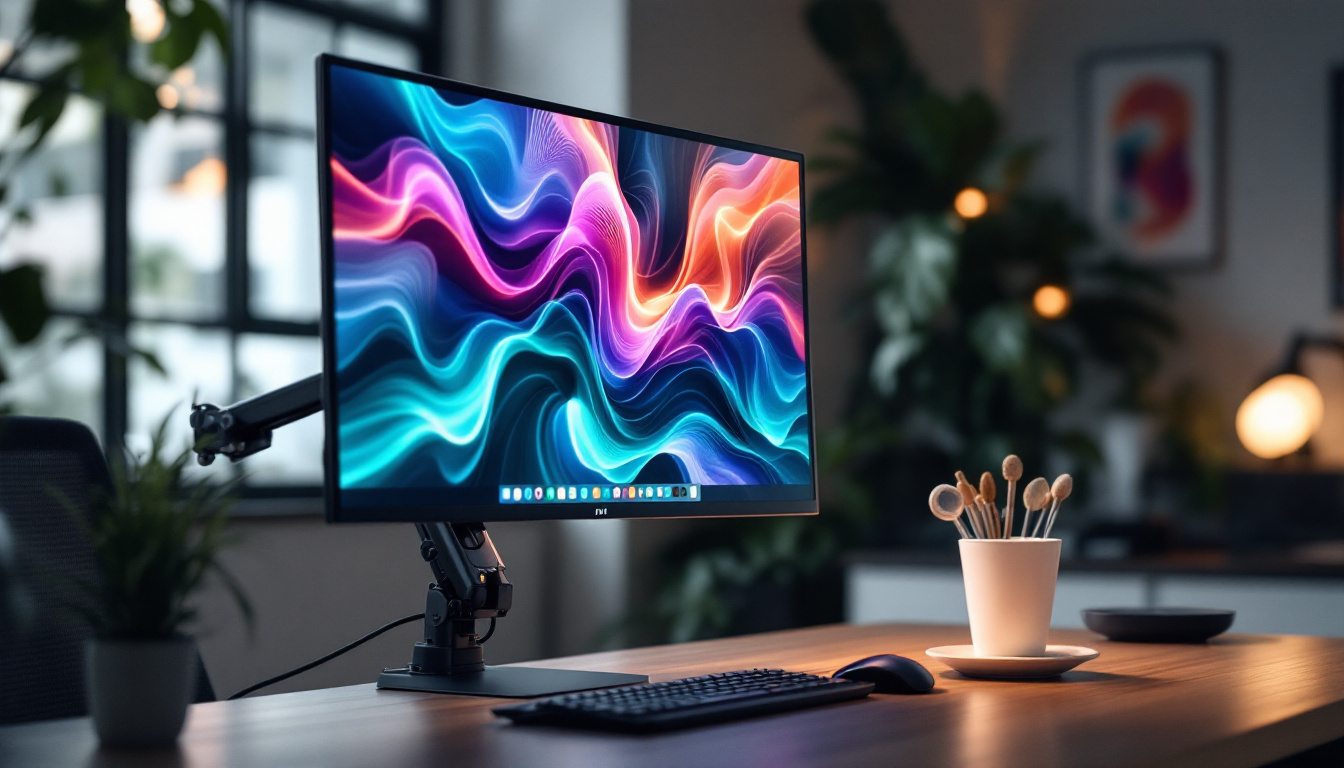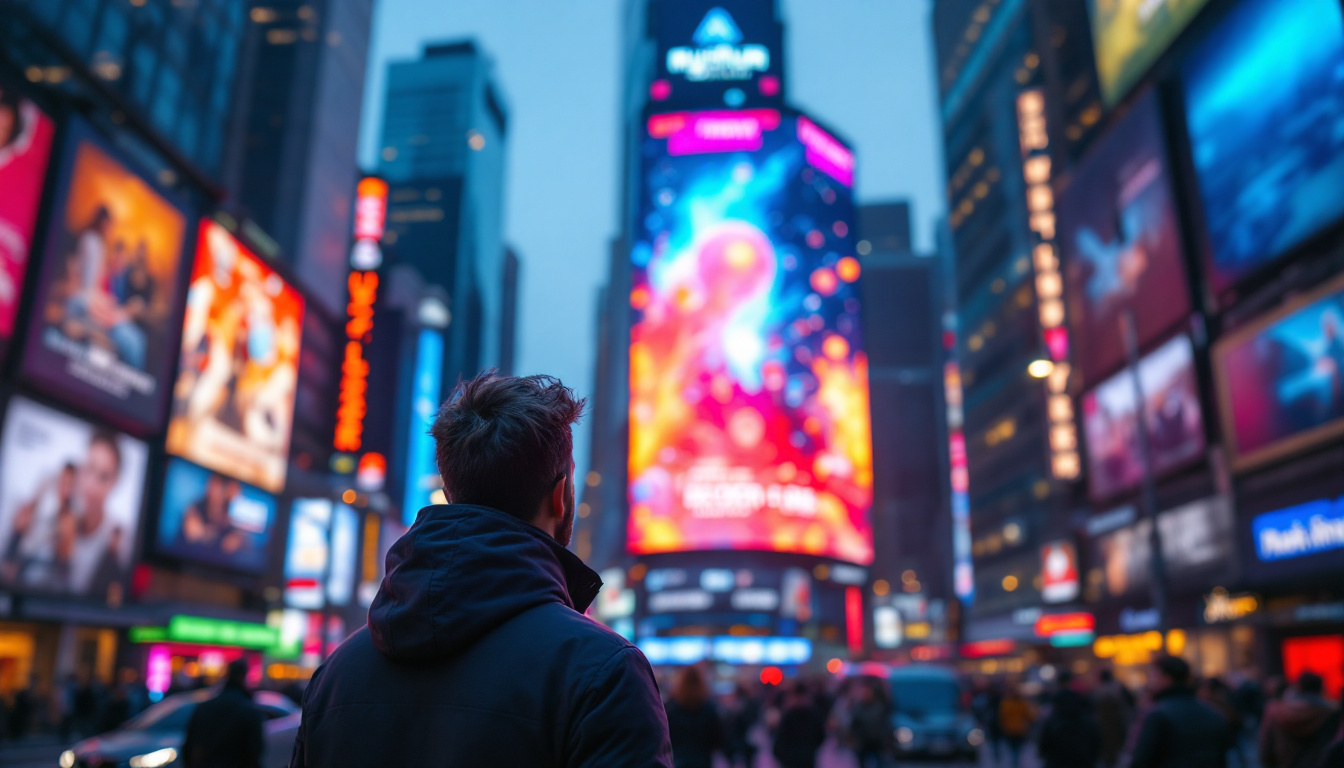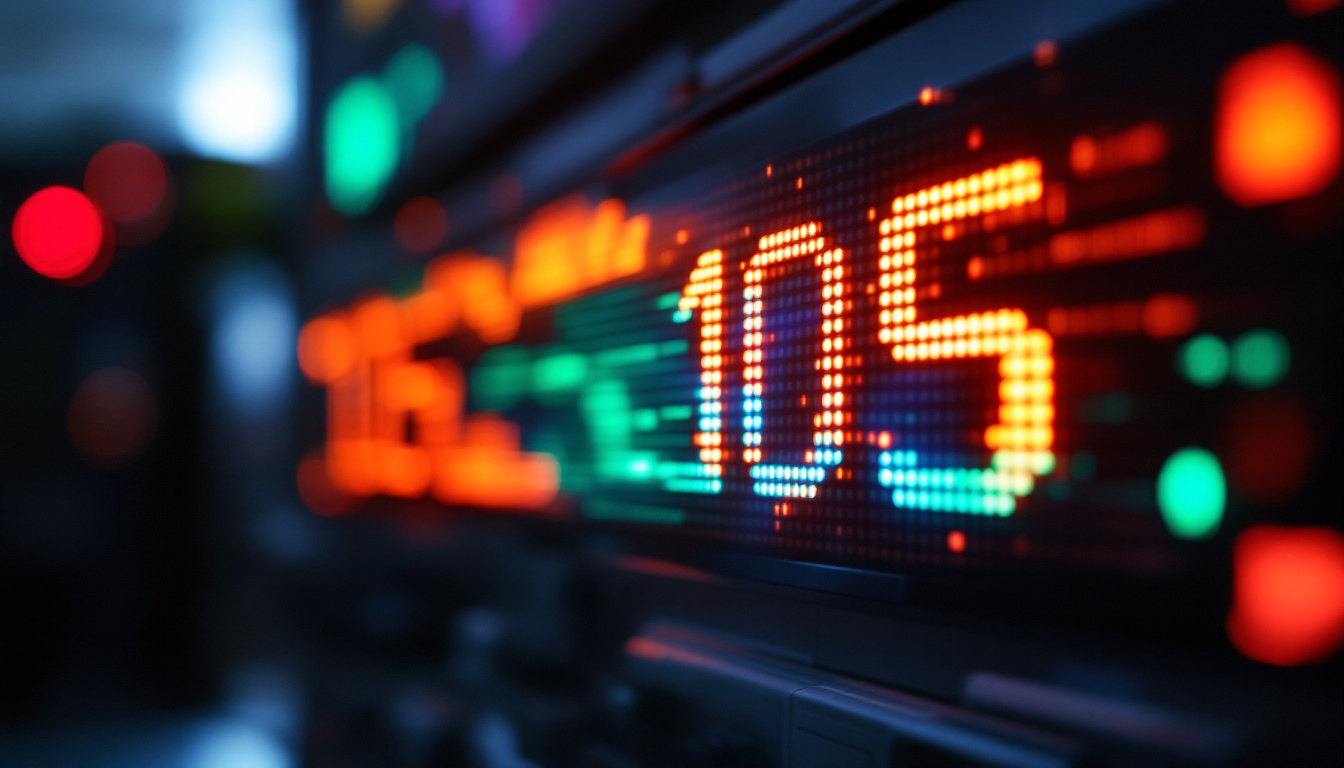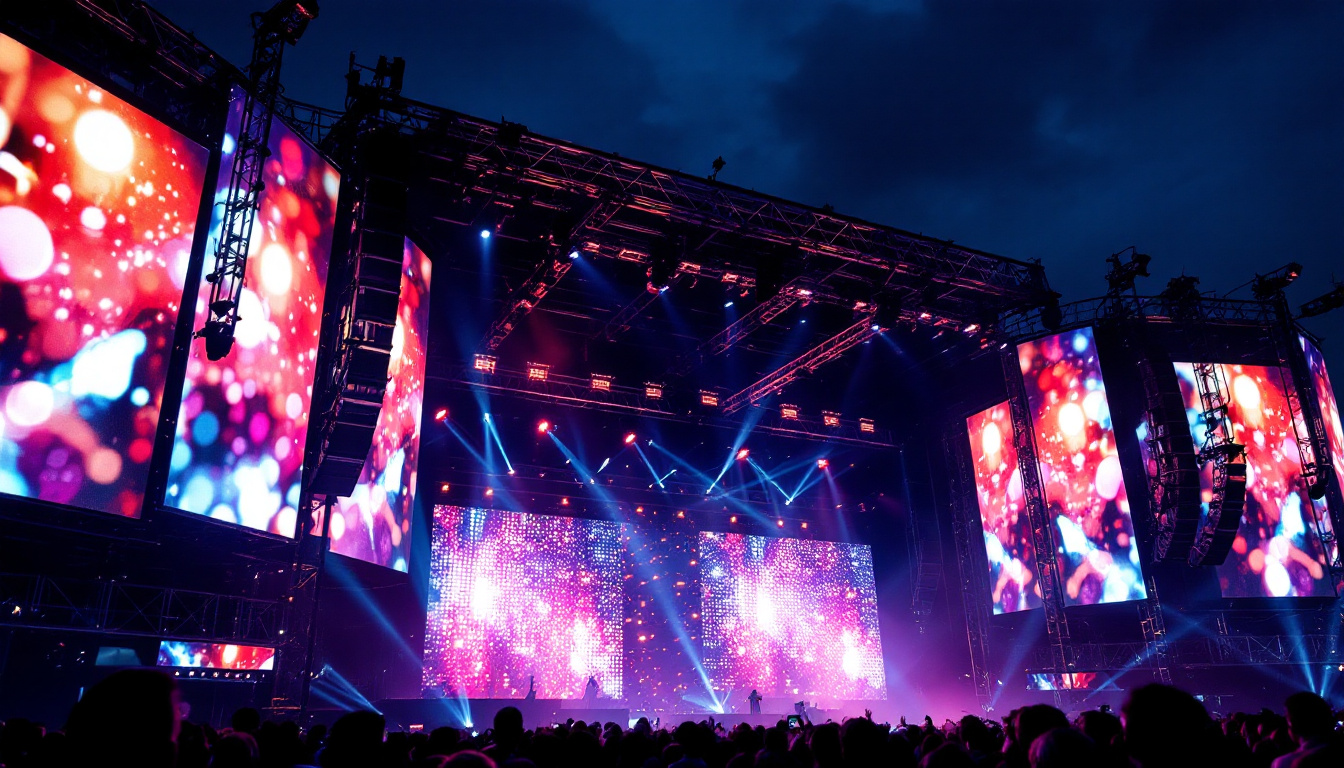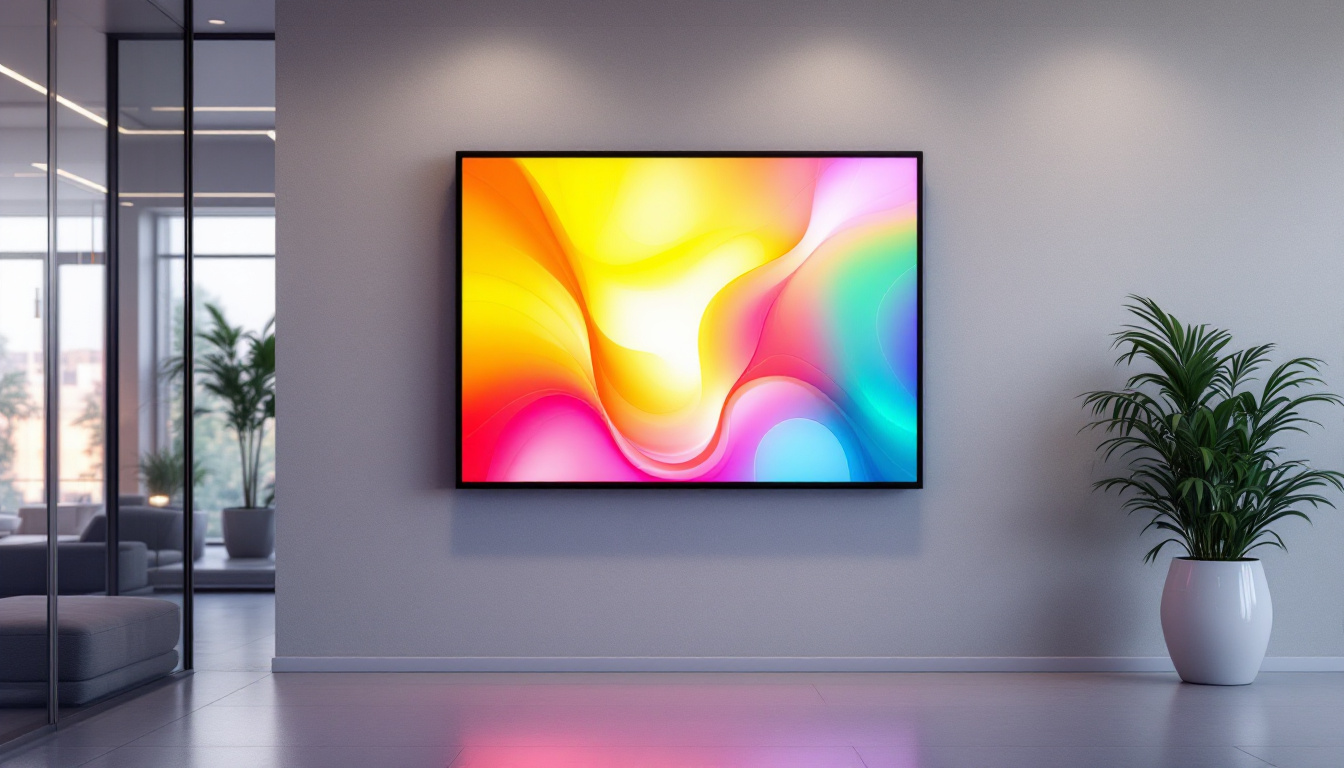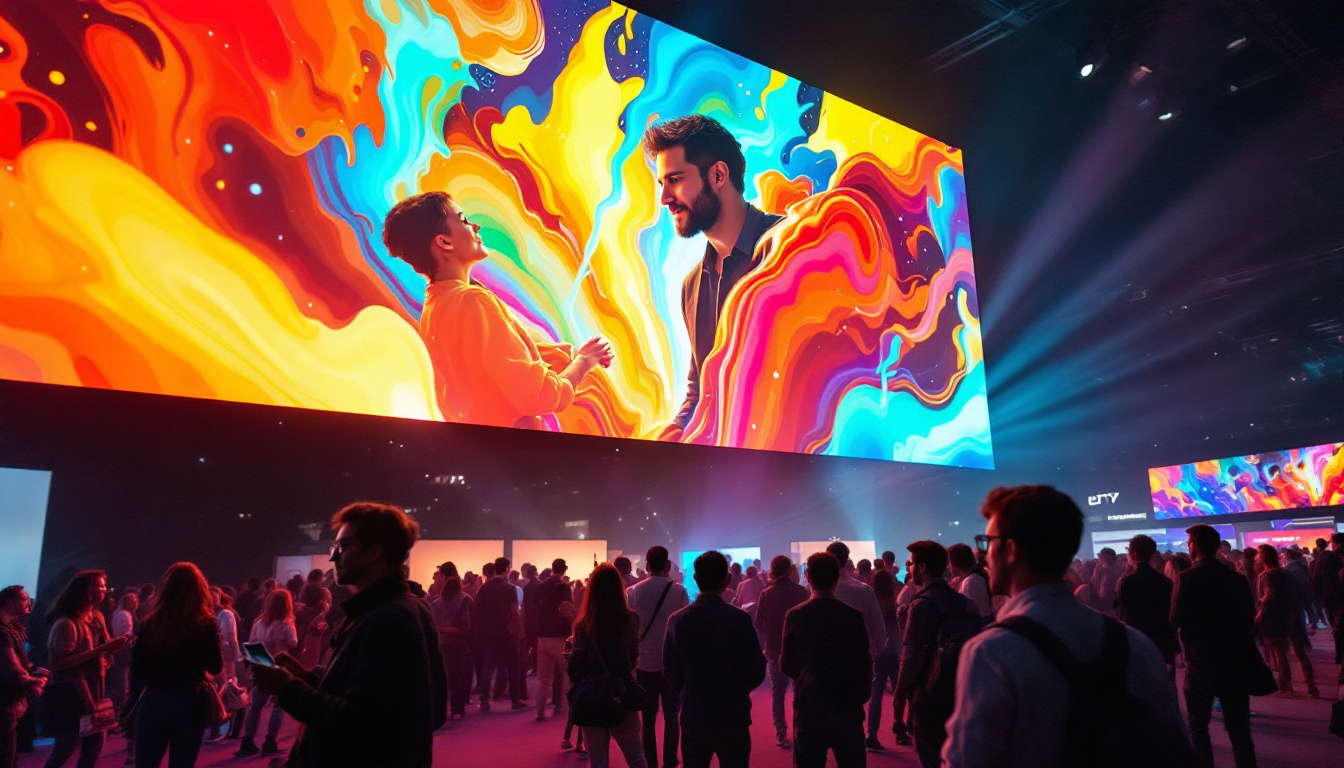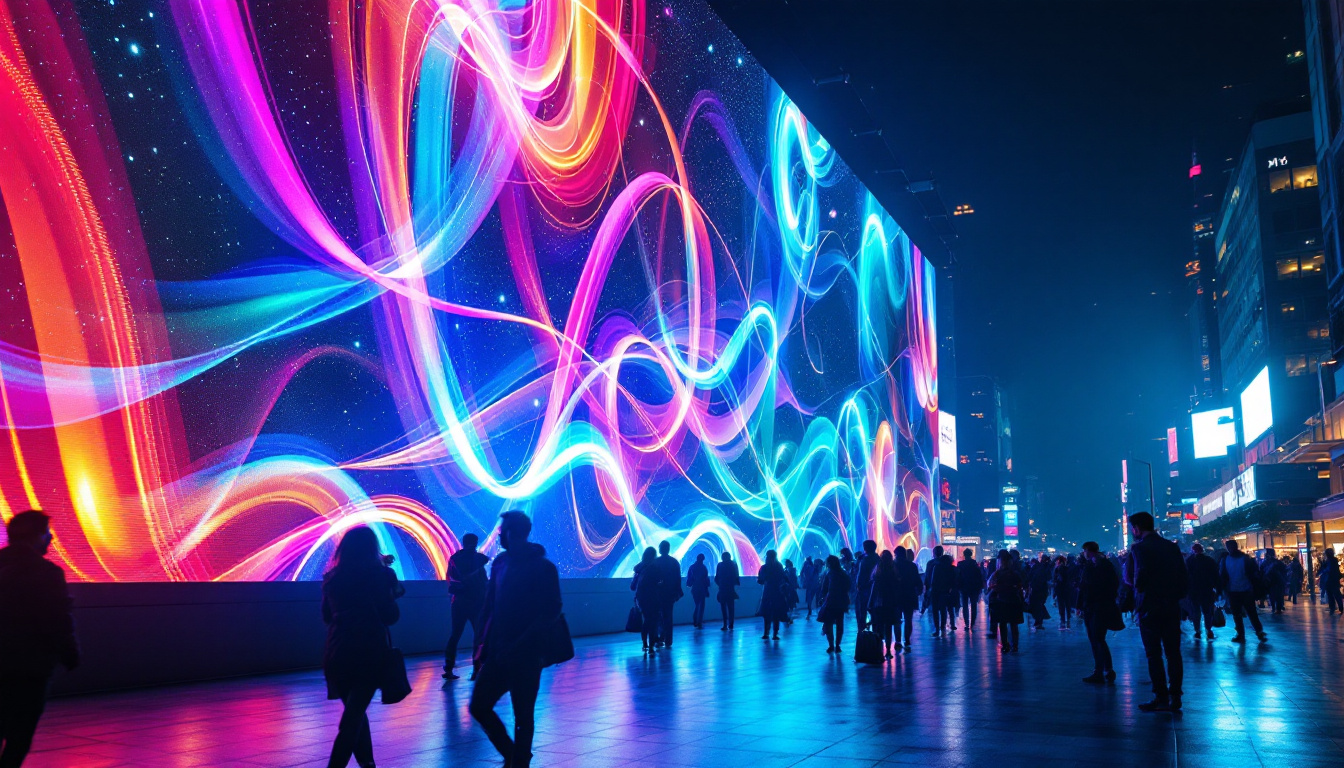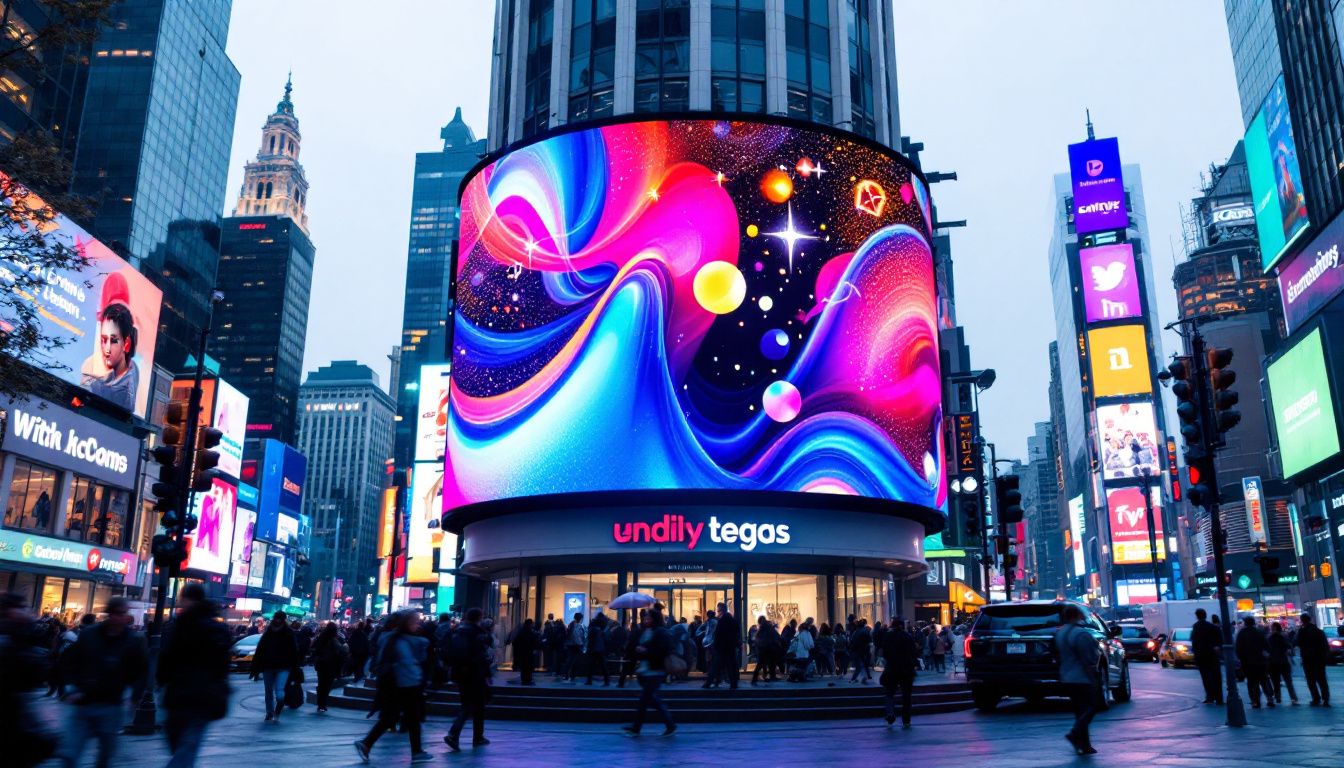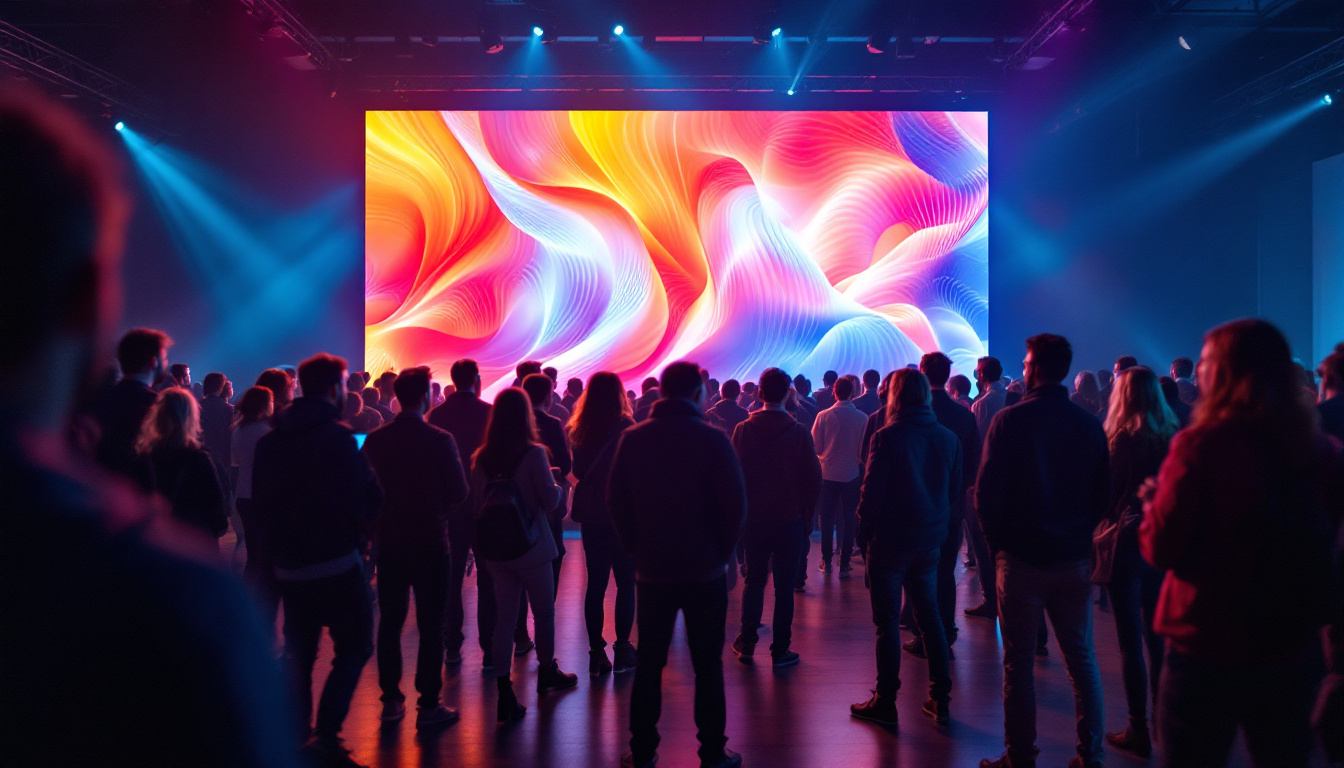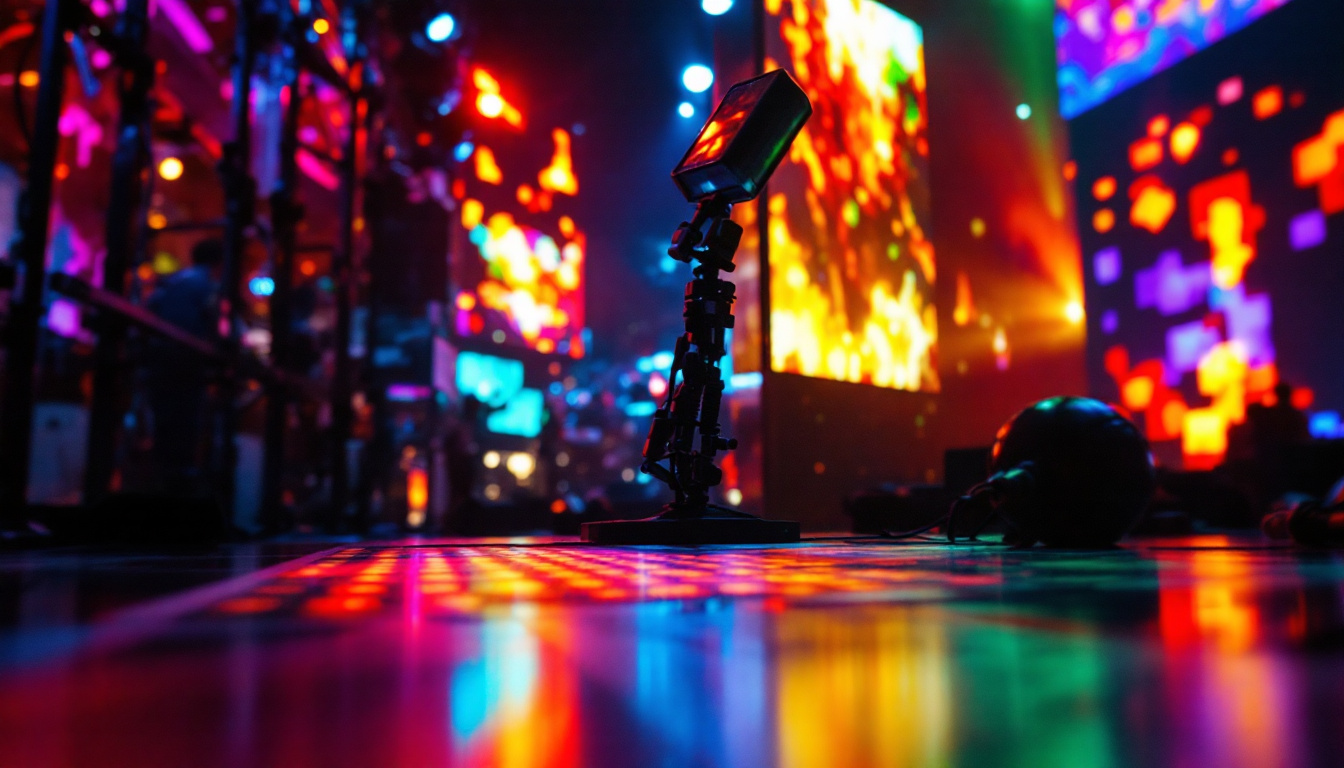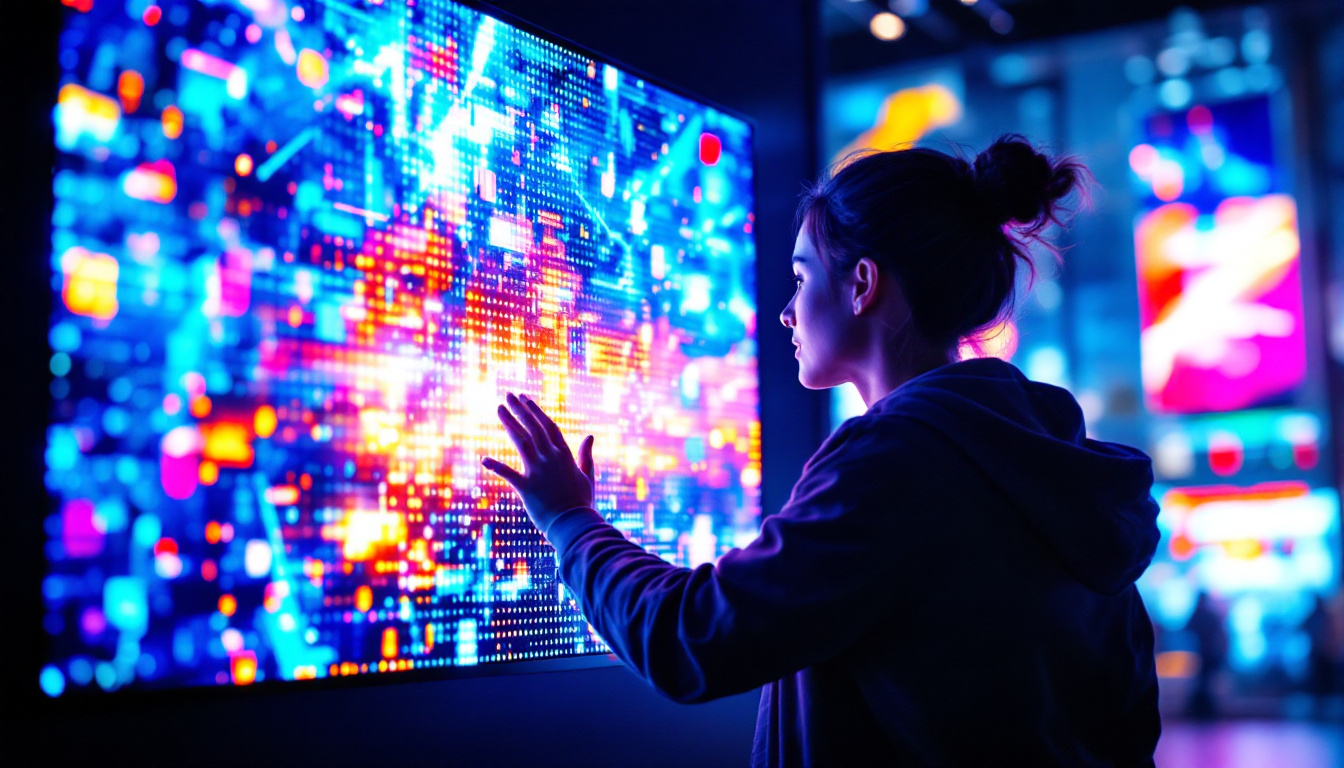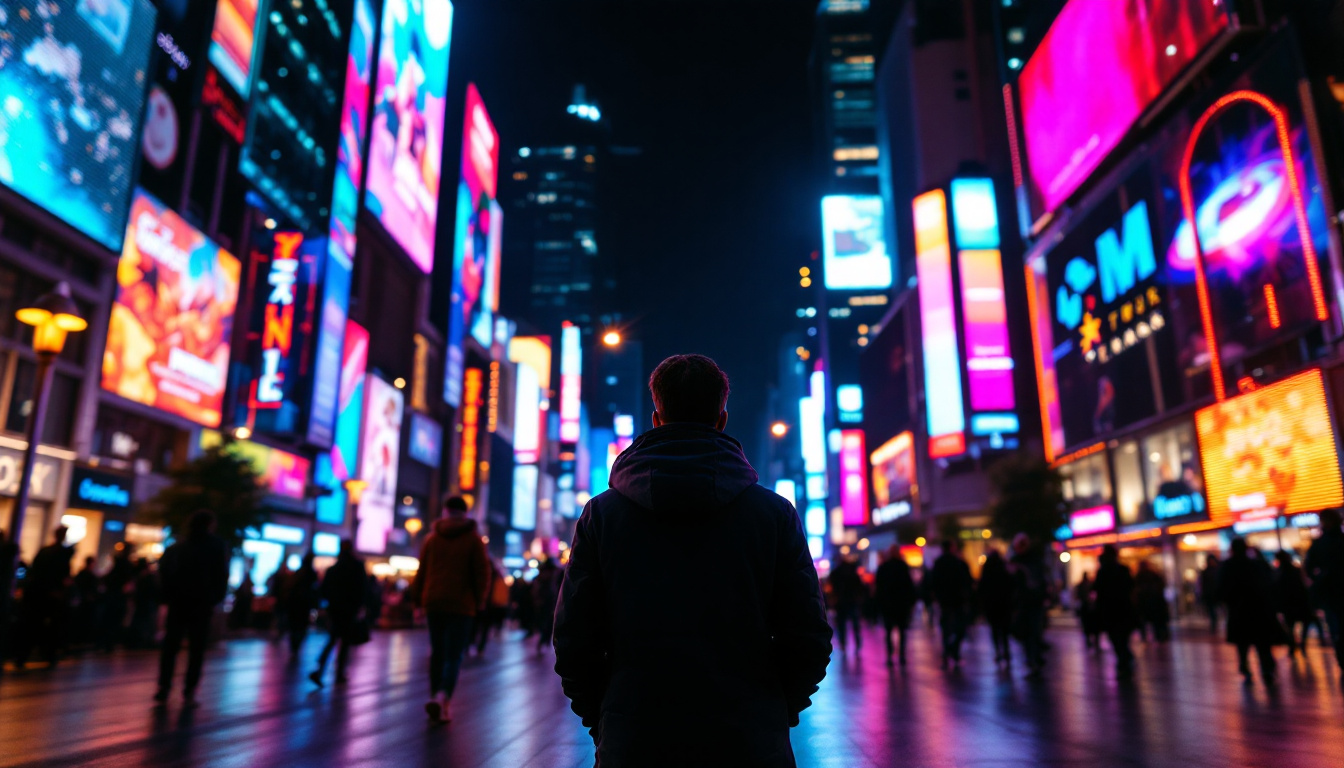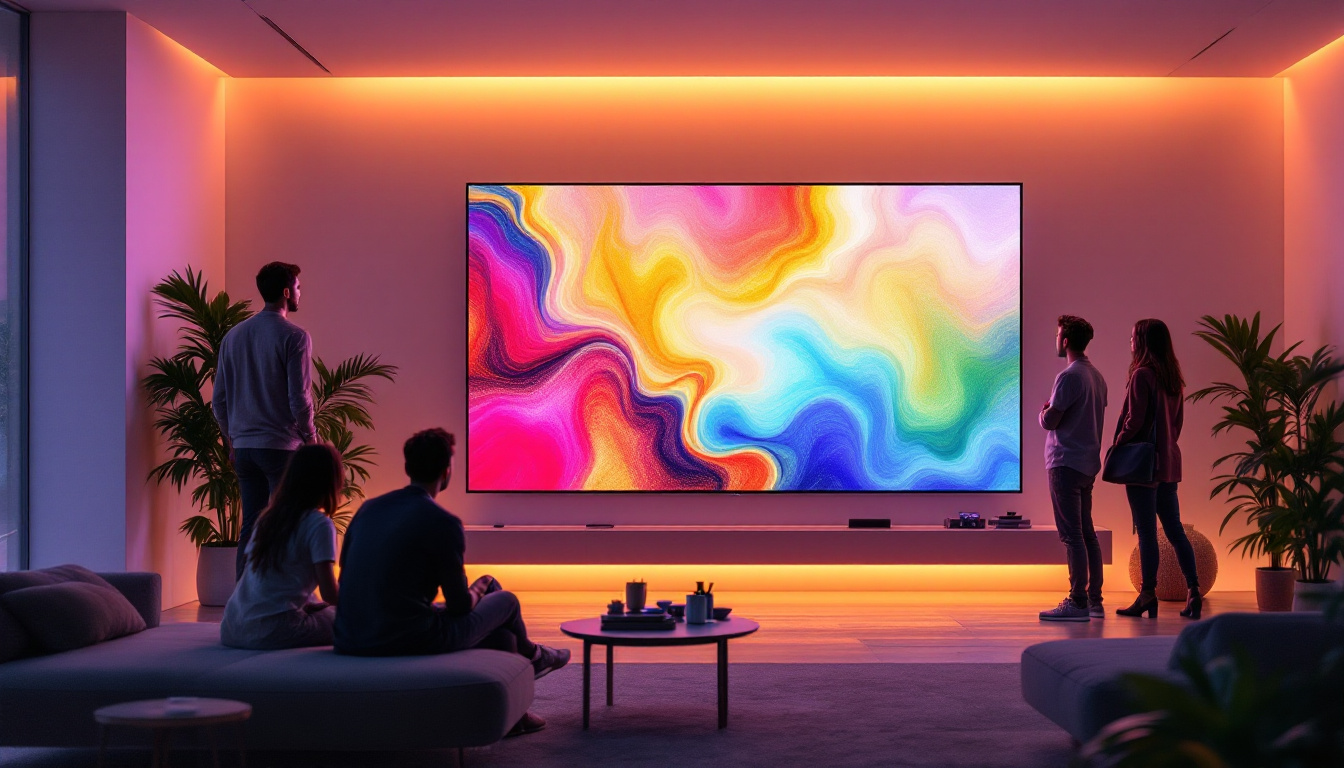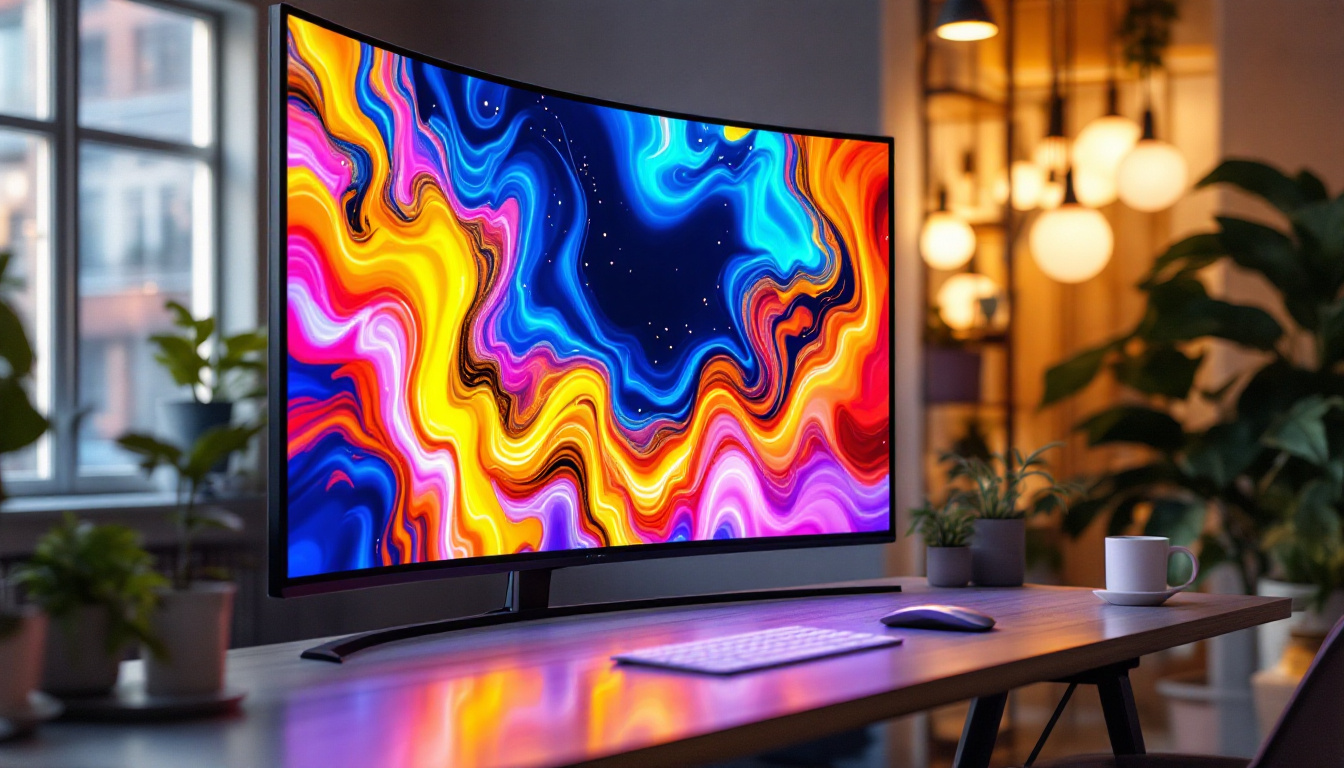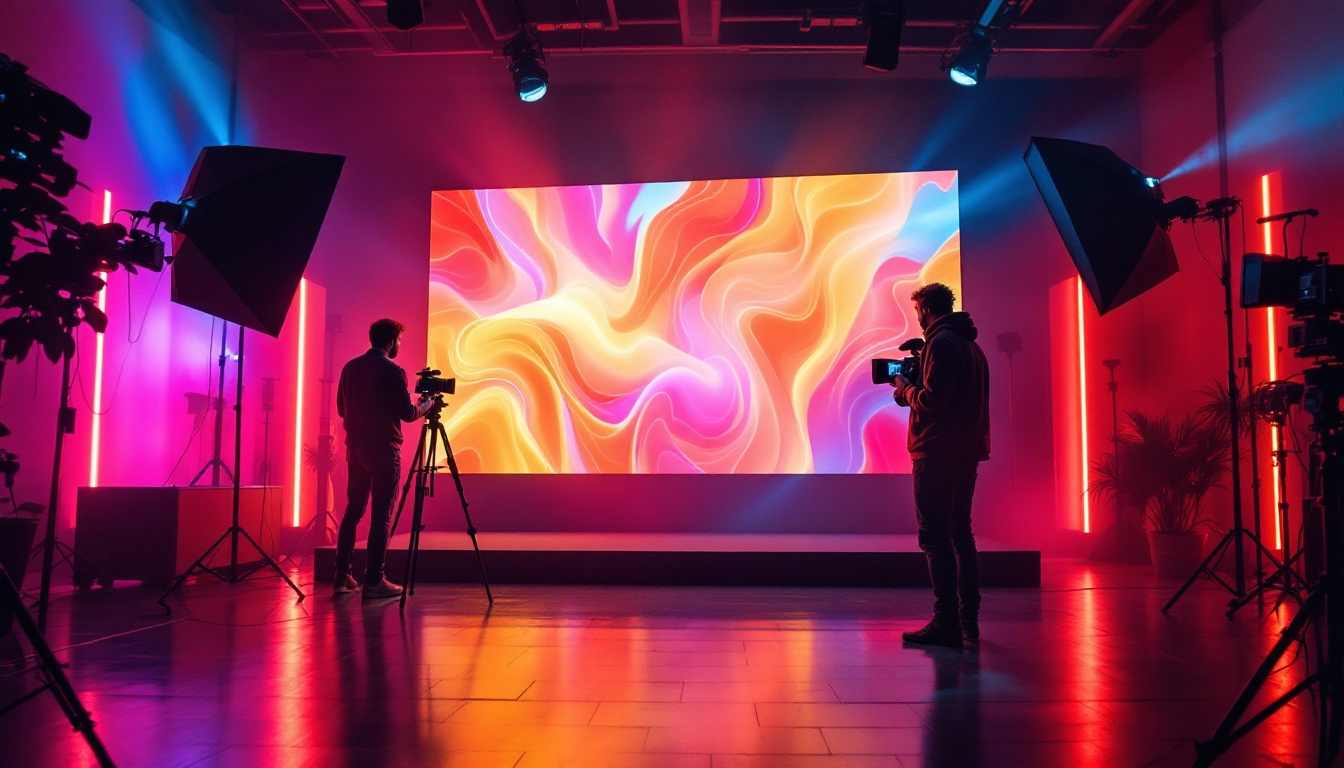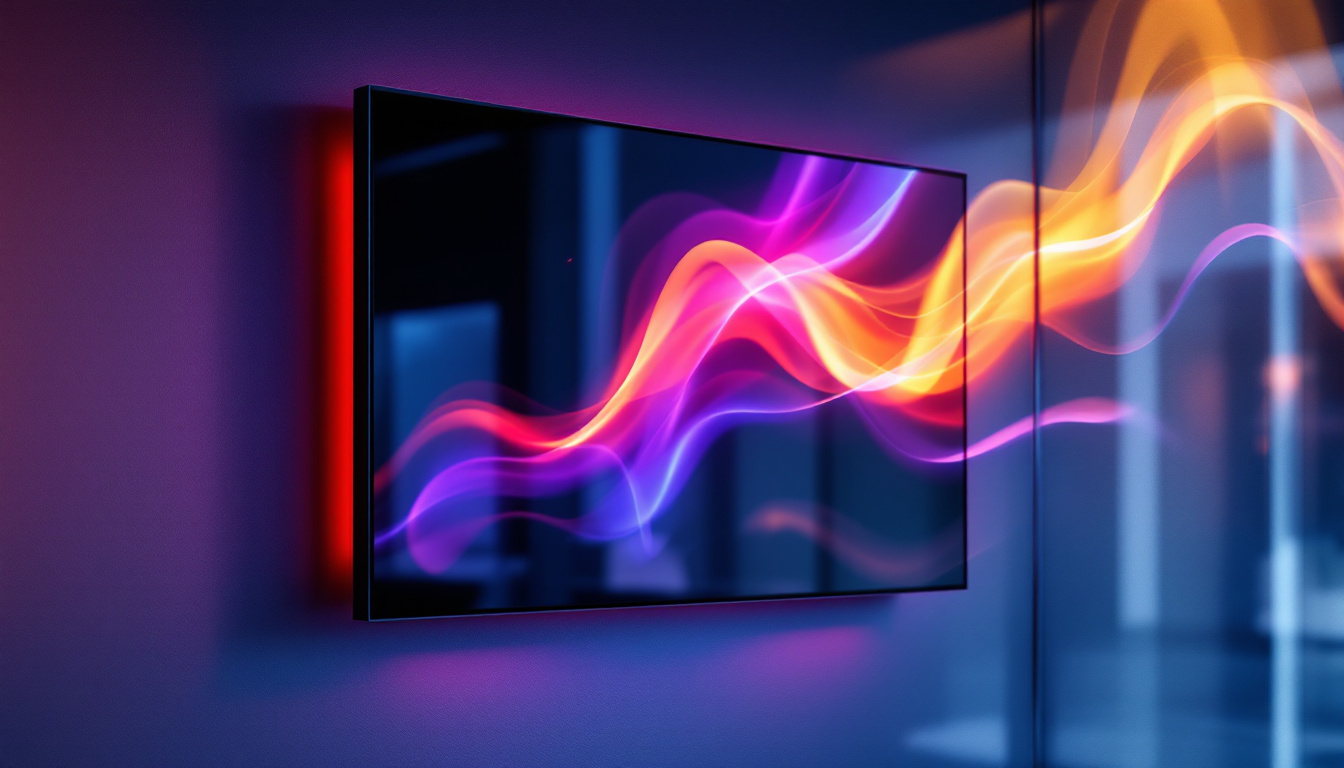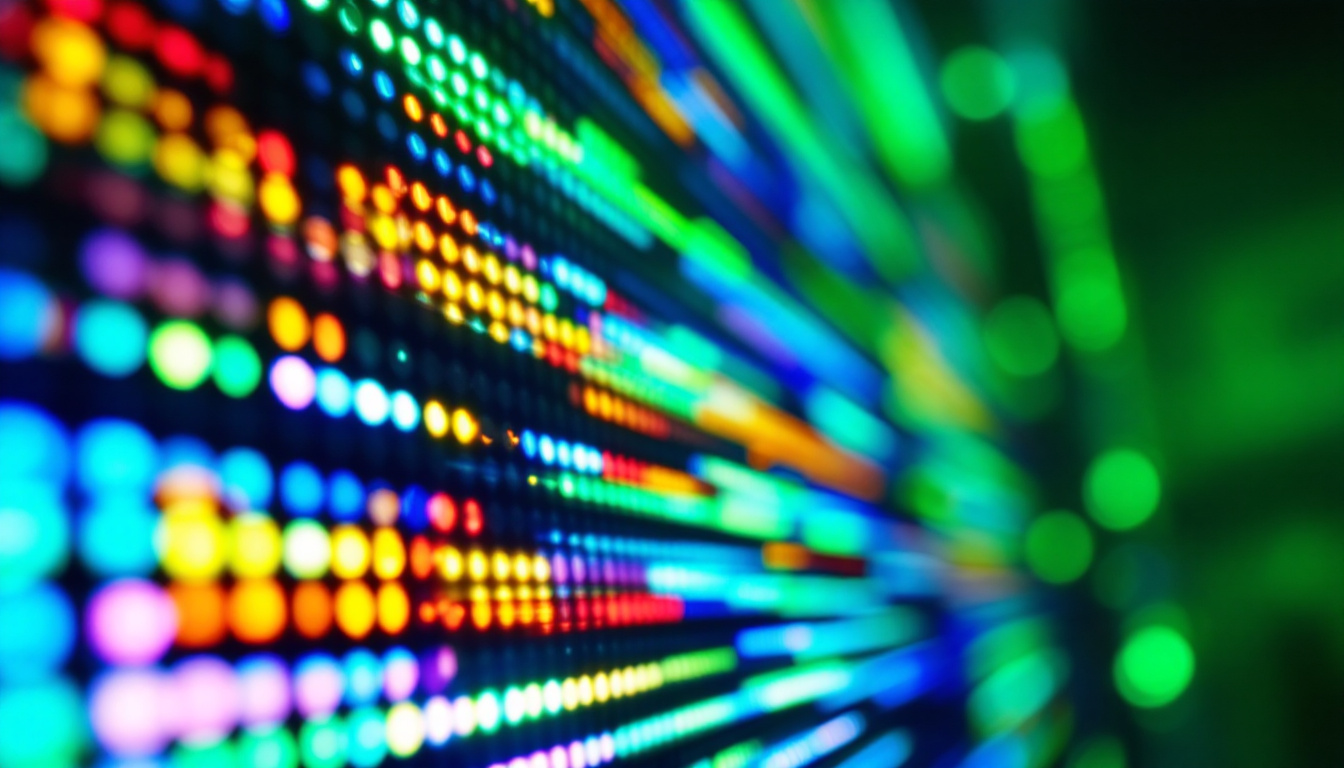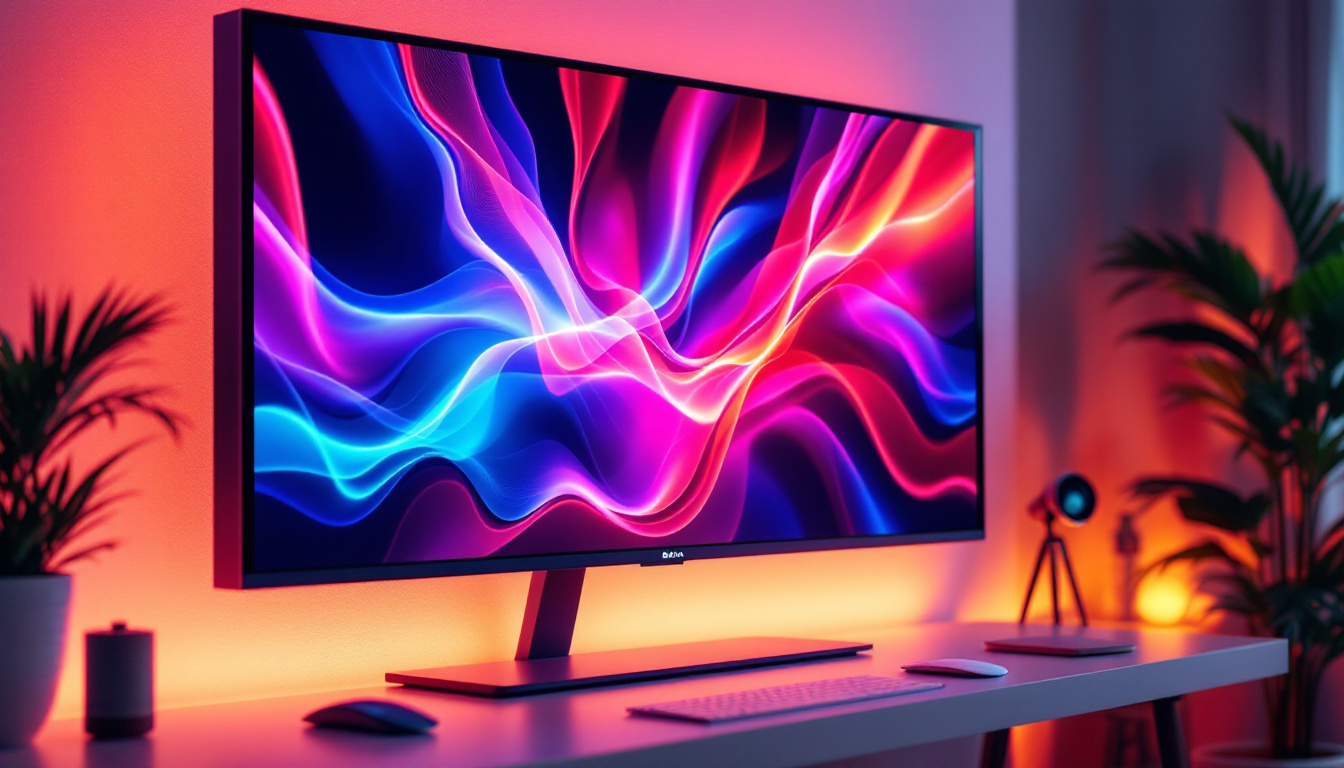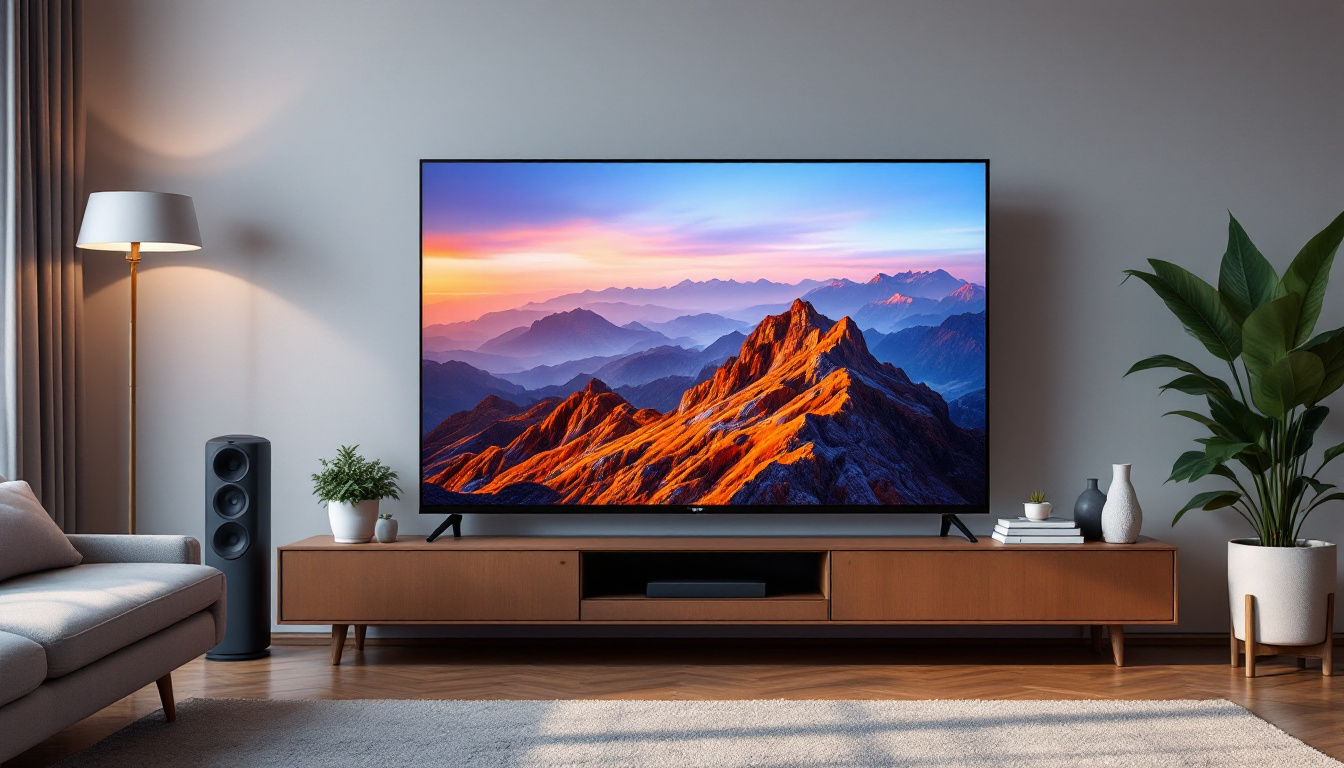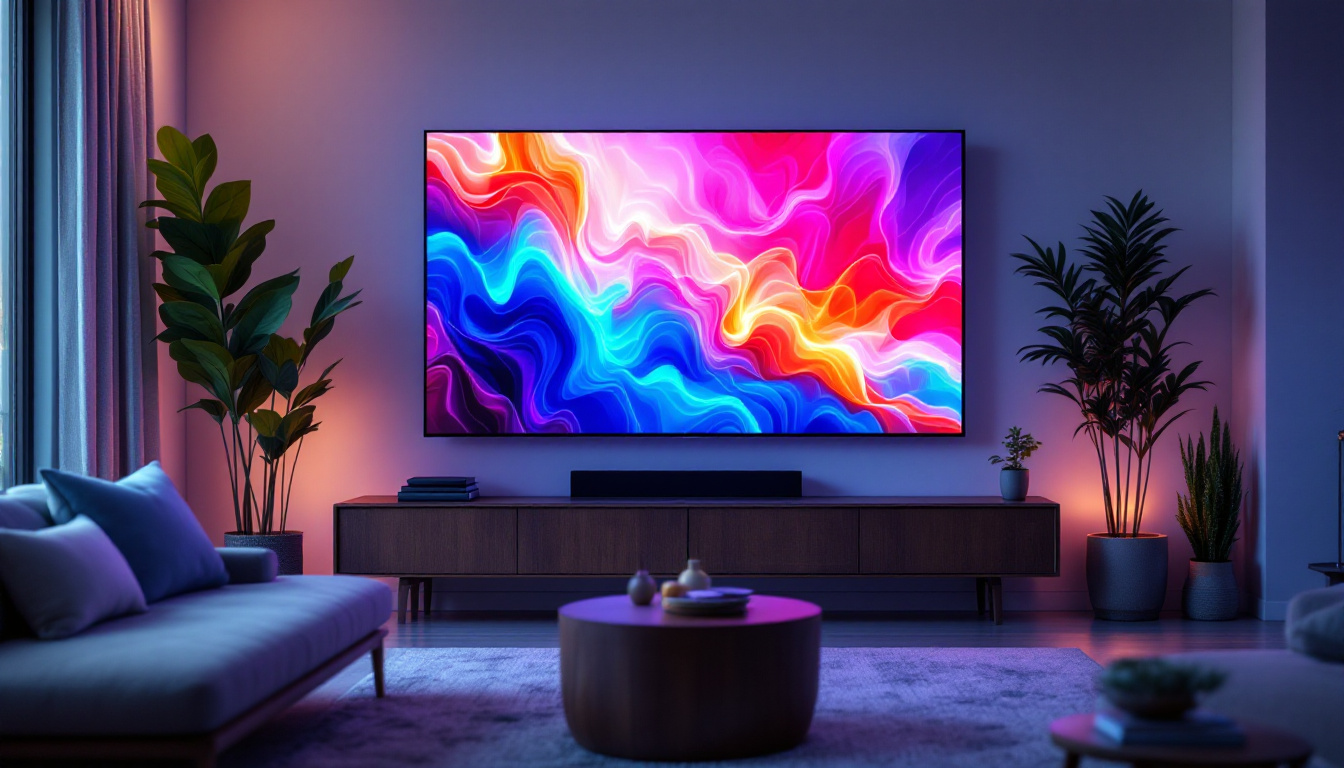In recent years, LED wall screens have revolutionized the way information is displayed and consumed. From large-scale advertising to immersive entertainment experiences, these displays have become ubiquitous in various sectors. This article delves into the intricacies of LED wall screens, exploring their technology, applications, and advantages.
Understanding LED Technology
LED, or Light Emitting Diode, technology is at the heart of modern display solutions. Unlike traditional LCD screens that use backlighting, LED displays utilize individual diodes to emit light, resulting in brighter and more vibrant images. This advancement in technology has revolutionized not only consumer electronics but also various industries, including advertising, entertainment, and even automotive lighting. The energy efficiency of LED technology contributes to its growing popularity, as it consumes significantly less power compared to older display technologies, making it a more sustainable choice for both manufacturers and consumers.
How LED Displays Work
At its core, an LED display consists of an array of tiny light sources. Each pixel is made up of red, green, and blue (RGB) diodes that combine to create a full spectrum of colors. When these diodes are illuminated in varying intensities, they produce the images and videos seen on the screen. This color mixing is not only crucial for achieving accurate color reproduction but also for creating stunning visual effects that captivate audiences. Furthermore, advancements in LED technology have led to the development of high dynamic range (HDR) displays, which enhance contrast and brightness, providing an even more immersive viewing experience.
The process begins with a digital signal that is processed by the display’s controller. This controller determines how much light each diode should emit, allowing for dynamic and high-quality visuals. The result is a display capable of producing deep blacks and brilliant whites, enhancing the overall viewing experience. Additionally, the rapid response time of LED displays minimizes motion blur, making them ideal for fast-paced content such as sports and action films, where clarity and detail are paramount.
Types of LED Displays
LED displays can be categorized into several types, each designed for specific applications. The most common types include:
- Direct View LED: These displays are made up of individual LED modules that can be assembled into larger screens. They are often used for outdoor advertising and large venues. Their ability to maintain visibility in bright sunlight makes them a favored choice for billboards and public displays.
- LED Video Walls: Composed of multiple LED panels, these walls can create a seamless visual experience. They are popular in concert venues, sports arenas, and corporate events. The flexibility of video walls allows for creative configurations, enabling designers to craft unique visual experiences tailored to specific events or themes.
- Transparent LED: This innovative type allows for visibility through the display while still showing images. It is often used in retail environments to create eye-catching advertising without obstructing views. Transparent LED technology not only enhances the aesthetic appeal of storefronts but also provides brands with a unique way to engage customers by blending digital content with the physical environment.
Applications of LED Wall Screens
LED wall screens have found their way into various industries, each leveraging the technology’s unique advantages. Their versatility makes them suitable for a wide range of applications, from entertainment to information dissemination.
Advertising and Marketing
One of the most prominent uses of LED wall screens is in advertising. Businesses utilize these displays to showcase dynamic content that captures the attention of passersby. The ability to change advertisements in real-time allows for targeted marketing strategies, making LED screens an effective tool for brands.
Furthermore, the brightness and color accuracy of LED displays ensure that advertisements remain visible even in bright sunlight, a significant advantage for outdoor advertising. This capability helps brands maximize their visibility and engagement with potential customers.
Entertainment and Events
In the entertainment industry, LED wall screens have become essential for concerts, festivals, and sporting events. They provide a canvas for stunning visuals, enhancing the overall experience for attendees. High-resolution LED screens can display live feeds, graphics, and animations, creating an immersive environment.
Moreover, the modular nature of LED displays allows for creative setups. Event organizers can design custom configurations that fit the venue’s layout, ensuring that every seat has a great view of the action. This adaptability is a significant reason why LED screens are favored in large-scale events.
Corporate and Educational Use
LED wall screens are also making waves in corporate and educational settings. In boardrooms, these displays facilitate presentations, video conferencing, and collaborative work. The clarity and size of LED screens enhance communication, making it easier for teams to engage with content.
In educational institutions, LED displays serve as powerful teaching tools. They can display interactive lessons, videos, and real-time data, fostering a more engaging learning environment. This technology supports various teaching methods and helps educators reach students more effectively.
Advantages of LED Wall Screens
The growing popularity of LED wall screens can be attributed to their numerous advantages. Understanding these benefits can help organizations make informed decisions about their display needs.
High Brightness and Contrast
One of the standout features of LED wall screens is their high brightness levels. Unlike traditional displays, LED screens can maintain visibility in bright environments, making them ideal for outdoor use. This capability ensures that content remains clear and engaging, regardless of the lighting conditions.
Additionally, LED technology offers superior contrast ratios, allowing for deeper blacks and more vibrant colors. This feature enhances the visual quality of images and videos, making them more appealing to viewers. High contrast is particularly important in environments where visual impact is crucial, such as advertising and entertainment.
Energy Efficiency
Energy efficiency is another significant advantage of LED wall screens. Compared to traditional display technologies, LED screens consume less power, making them a more sustainable option. This efficiency not only reduces operational costs but also minimizes the environmental impact.
Many modern LED displays also come with features like automatic brightness adjustment, which further optimizes energy consumption based on ambient light conditions. This capability ensures that the display operates efficiently while maintaining optimal performance.
Longevity and Durability
LED wall screens are designed for longevity, often lasting up to 100,000 hours or more. This durability makes them a cost-effective investment for businesses and organizations. Unlike traditional displays that may require frequent replacements, LED screens can withstand the test of time, reducing maintenance costs.
Moreover, LED technology is less susceptible to damage from shocks and vibrations, making these displays suitable for various environments, including outdoor settings and high-traffic areas. Their robust construction ensures that they can endure the rigors of everyday use without compromising performance.
Challenges and Considerations
While LED wall screens offer numerous benefits, there are challenges and considerations that potential buyers should be aware of. Understanding these factors can help organizations make informed decisions about their display solutions.
Initial Investment Costs
One of the primary challenges associated with LED wall screens is the initial investment cost. High-quality LED displays can be expensive, and organizations may need to allocate a significant budget for their purchase. However, it is essential to consider the long-term savings associated with energy efficiency and durability.
Many businesses view LED wall screens as an investment that pays off over time through reduced operational costs and increased customer engagement. By evaluating the potential return on investment, organizations can make more informed decisions regarding their display needs.
Technical Expertise and Maintenance
Another consideration is the technical expertise required for installation and maintenance. While LED wall screens are designed for durability, they may still require specialized knowledge for setup and troubleshooting. Organizations may need to invest in training for their staff or partner with experienced professionals to ensure optimal performance.
Regular maintenance is also crucial to keep LED displays functioning at their best. This maintenance can include cleaning, software updates, and hardware checks. Organizations should factor in these ongoing costs when evaluating the overall investment in LED technology.
The Future of LED Wall Screens
The future of LED wall screens looks promising, with continuous advancements in technology and applications. As the demand for high-quality visual experiences grows, manufacturers are innovating to meet these needs.
Emerging Technologies
One of the most exciting developments in LED technology is the integration of smart features. Many modern LED displays now come equipped with sensors and connectivity options that allow for real-time data integration and interactivity. This capability opens up new possibilities for engaging audiences and creating personalized experiences.
Additionally, advancements in pixel density and resolution are making LED displays even more appealing. Higher resolutions enable stunning visuals that can rival traditional projection systems, making LED screens a preferred choice for high-end applications.
Expanding Applications
As technology evolves, the applications for LED wall screens are expanding. Beyond traditional advertising and entertainment, industries such as healthcare, transportation, and smart cities are beginning to adopt LED displays for various purposes. From wayfinding solutions to real-time information sharing, the potential for LED technology is vast.
Furthermore, the trend towards interactive displays is gaining traction. Organizations are increasingly looking for ways to engage their audiences through touchscreens and interactive content, making LED wall screens a versatile solution for diverse environments.
Conclusion
LED wall screens have transformed the landscape of visual communication, offering a dynamic and engaging way to display information. Their high brightness, energy efficiency, and durability make them an attractive option for various applications, from advertising to education.
While challenges such as initial costs and maintenance exist, the long-term benefits often outweigh these concerns. As technology continues to advance, the future of LED wall screens promises even more exciting possibilities, making them an essential tool for businesses and organizations looking to enhance their visual presence.
In a world where capturing attention is paramount, LED wall screens stand out as a powerful medium that can elevate the way information is shared and experienced.
Discover LumenMatrix LED Display Solutions
Ready to take your visual communication to the next level? LumenMatrix is at the forefront of LED display technology, offering a wide array of innovative solutions that cater to your specific needs. Whether you’re looking for Indoor, Outdoor, Vehicle, Poster, Sports, Floor, Custom, or All-in-One LED displays, or even LED Transparent Displays, we have the expertise to bring your vision to life. Elevate your brand visibility and captivate your audience with our cutting-edge displays. Check out LumenMatrix LED Display Solutions today and see how we can help you make a lasting impression.

